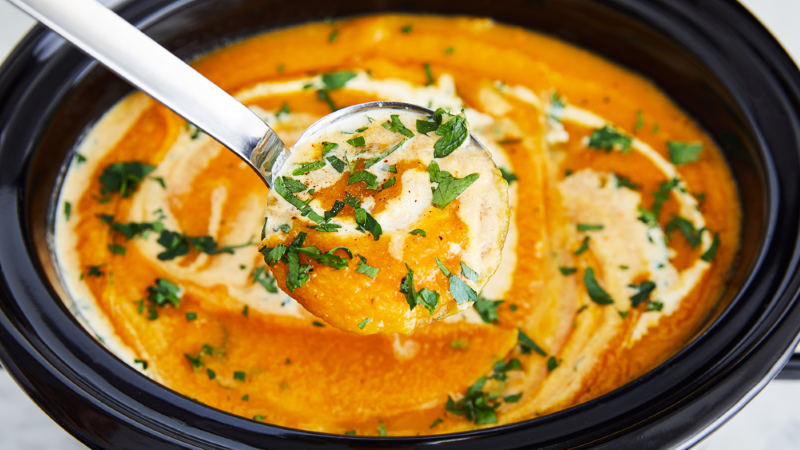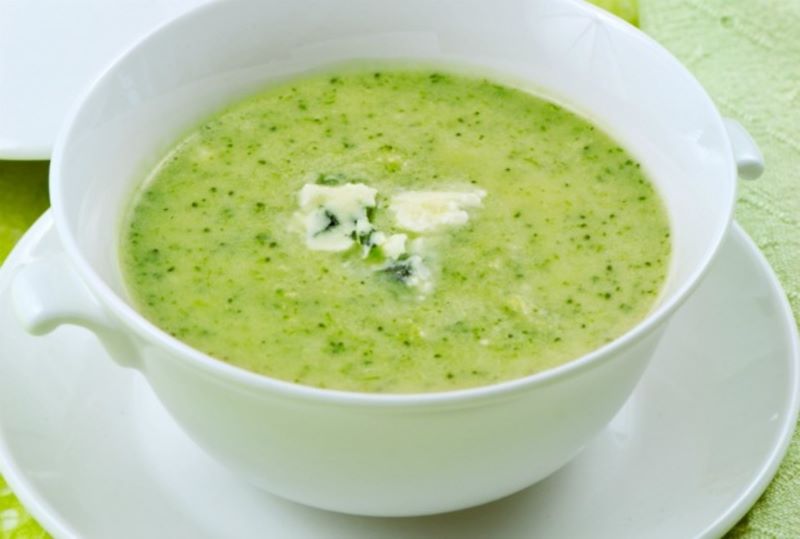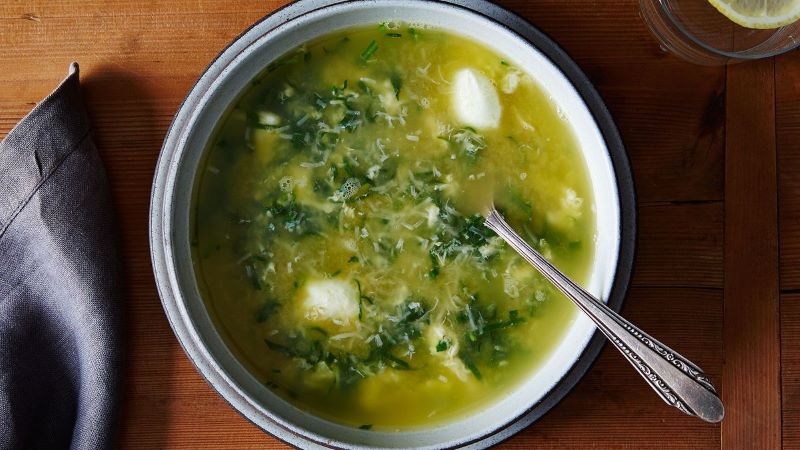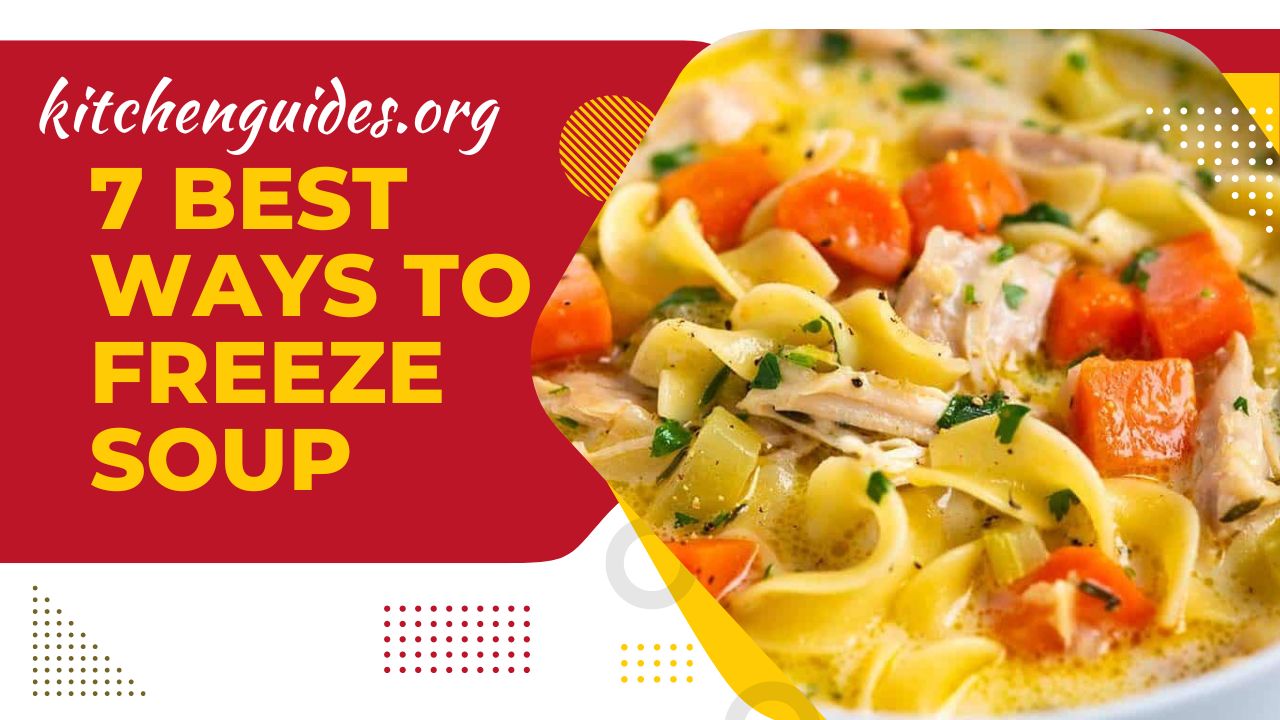If you find yourself with extra soup and want to save it for later, but you are wondering about the best way to freeze soup, don’t worry. There are multiple easy ways you can do this.
Why Freeze Soup?
Freezing soup is a good idea because it allows you to enjoy a delicious homemade meal without having to cook from scratch. It’s also perfect for those days when you just don’t feel like cooking. Instead of ordering takeout or going out to eat, simply pull out your frozen soup and pop it in the microwave or oven, and enjoy a healthy homemade meal in minutes!
What Happens When You Freeze Soup Improperly?

Freezing soup improperly can have some serious consequences. Here’s what happens when you freeze soup improperly, and how to avoid it.
1. It Can Become Rotten Or Spoiled
But even if this doesn’t happen right away, the quality of your frozen goods will start to decline over time.
2. It Can Cause The Soup To Become Cloudy, Or Worse, Make It Unsafe For Consumption.
These ice crystals can cause the liquid part of the soup to separate from the solid parts, which will leave behind pieces of frozen food in your next meal. This is most likely to happen if you use a metal container, as metal is more likely to hold in the heat than plastic or glass.
3. It can separate.
This means that the fat will rise to the top of your soup. It looks gross, tastes bad, and is a real pain in the neck when you try to reheat it.
4. It Also Changes Its Texture.
When you thaw out frozen soup and reheat it, it may taste just like it did before you froze it.
5. Bacteria Can Grow In It While It’S Stored In Your Freezer.
This happens because bacteria thrive in moist environments — like inside an opened container of food that’s been stored in your freezer for too long!
6. It Can Change How Thick And Creamy Your Soup
if you don’t prepare it properly before freezing or if your freezer isn’t as cold as it should be, this can change how thick and creamy your soup will be when thawed out again.
Soup for Supper – A Best Practice for Freezing

Freezing soup is a great way to enjoy your favorite homemade soup even when the weather is hot and there’s no time to cook.
Freezing soup is not difficult, but there are some best practices to follow for success.
1. Make Sure You Have Enough Room In Your Freezer.
The best way to do this is to make a chart listing the different types of food you have and how much of each you want to freeze.
2. Freeze the soup in small containers
Such as plastic yogurt containers or small plastic bags (these can be purchased at most grocery stores). If you use plastic bags, remember not to overfill them because they expand when frozen.
3. Use Freezer-Safe Containers That Seal Tightly.
They need to keep the liquid from evaporating, and the lid must be able to withstand the pressure of freezing and thawing without breaking.
4. Don’t Overfill Your Containers Or Leave Too Much Headspace.
If you do, when you freeze your soup and then thaw it later, all that excess liquid will expand into a waterfall on your countertop! I usually fill my containers about 80% full, leaving 20% headspace for expansion.
5. Don’t Freeze Hot Soup Right Away.
It’s better to let it cool completely first, then divide it into single-serving containers (like ice cube trays) and freeze them overnight before transferring them to freezer bags or plastic containers. This makes it easier to remove just what you need without having to defrost the entire container.
6. Freeze Quickly
Allowing cold food to sit out at room temperature can promote bacterial growth — which means that if you leave your soup on the countertop while you’re preparing dinner, it could spoil by the time you’re ready to serve it!
7. Cool Down The Soup Completely Before Putting It In The Freezer.
This will help prevent contamination of bacteria later in the process.
What is the best way to freeze soup?

The soup should be frozen in small quantities and with a minimum of liquid. If you are making a large batch, divide it into freezer containers or bags as soon as it has cooled. This will prevent bacteria from developing.
There are 2 ways to freeze soup:
In A Shallow Container
There is room for expansion of the liquid as it freezes. Packaging your soup in an airtight container or plastic bag will result in flat, less flavorful soups when they are thawed.
In Ice Cube Trays
Once frozen, transfer cubes to sealed containers or zip-top freezer bags and label with the date and contents. Freeze up to 3 months.
Varieties of Frozen Soups Exist

Frozen soups are a great way to enjoy a healthy meal and you can find many varieties of frozen soups in the market. Frozen soups are easy to prepare and cook in a microwave oven. They are also available in different flavors and taste good.
Frozen soup varieties include:
1. Minestrone Soup
It is made from tomatoes, onions, celery, beans, and pasta. You can buy this soup from any store or supermarket. This dish is usually served as an appetizer or starter for main courses like chicken or fish dishes. Minestrone soup has a thick consistency with a rich flavor that comes from herbs such as basil and oregano.
2. Butternut Squash Soup
This type of soup is made with butternut squash which is cooked until tender and then blended into a creamy consistency with milk, cream cheese, and spices such as nutmeg, cinnamon, and ginger; onions, garlic, and carrots are also added for flavor. This dish tastes best when served cold during summer months or hot during winter months with warm breadsticks or crackers on the side for dipping into this delicious dish!
3. Cream Of Broccoli Soup
Cream of broccoli soup is a favorite among many people because broccoli is so healthy for you. This type of soup has a creamy texture and is made with fresh broccoli florets, onions, and potatoes. You can use either fresh or canned broccoli florets in this recipe, but fresh produce will give you the best results.
4. Chicken Noodle Soup
Chicken noodle soup is probably one of the most popular types of frozen soups available today. The broth is made with chicken stock and contains plenty of vegetables such as carrots, celery, onion, and noodles made with egg noodles or vermicelli pasta. The chicken meat should be cooked separately before adding it to the soup mixture so that it doesn’t get overcooked while steaming in the microwave or on top of the stovetop burner.
5. Spinach soup
Spinach soup is a simple vegetable dish that combines spinach, onions, and potatoes into a creamy soup. You can add any type of vegetable you like to your spinach soup because it’ll turn out flavorful. This recipe also includes some fresh garlic pieces so it will taste great even if you don’t have fresh garlic right now.
Helpful Tips for Thaw and Reheat Soup
Soup is one of the easiest and most versatile dishes to make. It’s also one of the most convenient foods you can keep in your freezer.
Here are some tips for making sure your soup comes out just as good as the first time around:
Thawing Soup
1. In the Microwave
The best way to thaw frozen soup in the microwave is to heat it on high power for 30 seconds at a time until it’s softened enough to stir. If your soup has chunks or pieces in it (like chicken), don’t try to heat them up all at once; instead, defrost each piece separately so they cook evenly.
2. At Room Temperature
If your soup isn’t completely frozen, you can thaw it at room temperature over several hours or overnight by leaving the lid off of your container and letting it defrost in a cool spot like your refrigerator or on the kitchen countertop overnight.
Reheating Soup
1. Over the Stove
You can also reheat the soup on top of the stove by adding water or broth if needed and simmering over low heat until warmed through (again, stirring occasionally). If your soup contains meat or poultry, check its temperature after about 20 minutes of cooking time; when fully cooked, chicken reaches an internal temperature of 165°F (74°C) and meat reaches 160°F (71°C).
2. In the Oven
For slow-cooked soups, you can also heat them in the oven. Heat it on low until the soup is hot throughout, stirring occasionally. When reheating meat or poultry soups, be sure to check for doneness about halfway through the cooking time and then again about five minutes before you think it’s done; these types of soups can overcook easily.
FAQs
1. Can I freeze soup in a glass container?
Yes. Glass containers are ideal for freezing liquids because they don’t release harmful chemicals into foods. However, if the glass cracks while frozen, the food may become contaminated with bacteria from the air or outside environment.
2. Can I Freeze Soup In Plastic Containers?
Yes, but you should use freezer-safe plastic containers only. Never use regular plastic containers for freezing as they will degrade over time and leach chemicals into your food.
3. How Long Will My Homemade Soup Last In The Freezer?
If stored properly, most soups will last 2-3 months in the freezer. However, this can vary based on the ingredients used in your recipe and how well you follow certain steps when freezing the soup.
4. Can I Freeze Canned Soup?
Yes! You can freeze canned soup just as easily as homemade soup or instant ramen noodles. If you have leftover canned soup, simply transfer it into an airtight container and place it in the freezer until solid.
5. Can I freeze chicken broth or vegetable broth?
Yes! You can freeze chicken broth or vegetable broth by themselves or add them to other recipes such as soups and sauces. Make sure that you cool down your stock before placing it in an airtight container and putting it into the freezer. You can also use an ice tray with a lid on top so that you don’t have to worry about spilling anything while trying out different combinations of flavors!
6. Can You Freeze Homemade Soup?
Yes, you can freeze homemade soup. Just make sure that all ingredients are fully cooked and cooled before freezing them for later use. Do not add any dairy products like cream or butter until after you thaw the soup and have heated it through again as this will affect its consistency when reheated later on.
In Conclusion
If you’re anything like me, you love soup. It’s always cold outside and soup feels so warm in your belly. But, soups can take a while to prepare so they’re not the best quick meal to make. With this in mind, I wanted to share with you the best way to freeze soup quickly so you can have a nice warm bowl of homemade soup to enjoy later when it’s cold outside!
